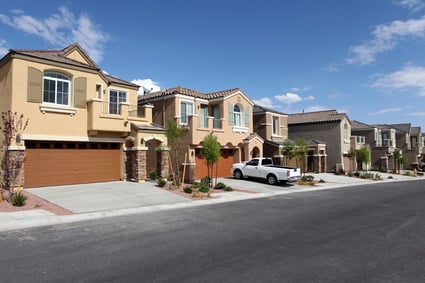After a short slump at the very beginning of the COVID-19 pandemic, the residential home market quickly recovered and prices soared most of 2020. Price increases were primarily due to ultra-low mortgage rates, strong buyer demand, and a limited number of houses for sale. Who would have thought that mortgage rates creeping toward 3% would be a bad thing? But that’s not the only issue potentially beginning to sour the residential market.

Regardless of a few clouds on the horizon, most experts expect 2021 to be a robust year for home sales. But we should always keep an eye open to changes on the horizon.
Early this year the 30-year mortgage bottomed out at 2.65% and is now about 2.81% according to Freddie Mac. The feds are expected to keep the rate very low for a couple of more years but there is some consensus that mortgage rates will move higher and hoover around 3.1% for most of 2021.
The National Association of Realtors says the median household income of first-time buyers in 2020 was $80,000, up from $68,703 in 2019. That’s a big jump with a 16.4% increase. A good part of that is due to high-income millennials (less affected by the pandemic’s financial effects) that made 38% of the purchases. It’s questionable how much more in price jumps they can absorb with prices expected to go up at least 3% on top of higher interest rates. The 3% appreciation estimate may be significantly low considering Realtor.com's data for the week ending February 20, 2021, shows that the median listing prices went up by 14.5% over last year. This is well before the spring season of high demand.
Foreclosures are also on the horizon. According to Black Knight (mortgage data company), in January there were 2.7 million households in foreclosure in the amount of $547 billion in unpaid principal (not counting interest and related fees). You might expect a tsunami of foreclosures to soon be for sale that will boost the available inventory. But that doesn’t appear to be what is happening. A combination of the CARES Act and pseudo-government agencies like Fannie and Freddie have kept that number low compared to the estimated 4 million that COVID-19 was expected to send into forbearance or foreclosure. Current government policies can be expected to prevent a significant portion of the 2.7 million from losing their homes. These are homes that will not become active listings.
Now that we are well into 2021, houses continue selling almost two weeks faster than at this time last year. The inventory of homes for sale in January decreased by 42.6% compared to the same time in 2020, which is an even faster decline in inventory compared to the 39.6% drop in December.
We are truly in unique times but we should still expect the housing market to eventually move towards a balance between supply and demand. We have to wait and see if it will happen in 2021 but house prices will likely get to a point where the market won’t bear it any further. Houses will remain on the market, and inventory will increase until prices drop. The other component to continue looking for is new-construction increasing the supply.
In the end, it almost impossible to see what will unfold through the remainder of 2021. The immediate future has all of the above problems along with COVID-19 vaccine distribution problems and maybe more important, the limited understanding of what the virus variations will mean to the economy and housing market in 2021.
Please leave your thoughts and comments.
Also, our weekly Ask Brian column welcomes questions from readers of all experience levels with residential real estate. Please email your questions, inquiries, or article ideas to [email protected].